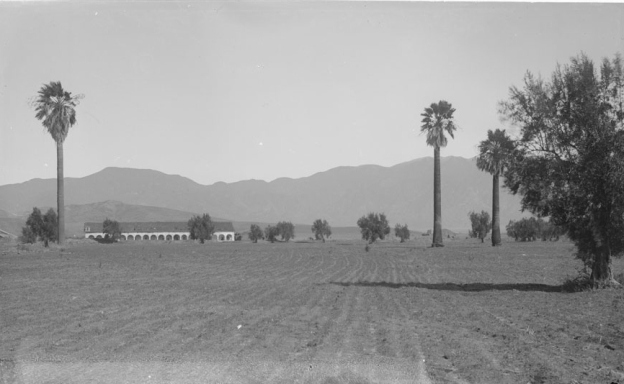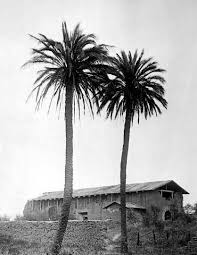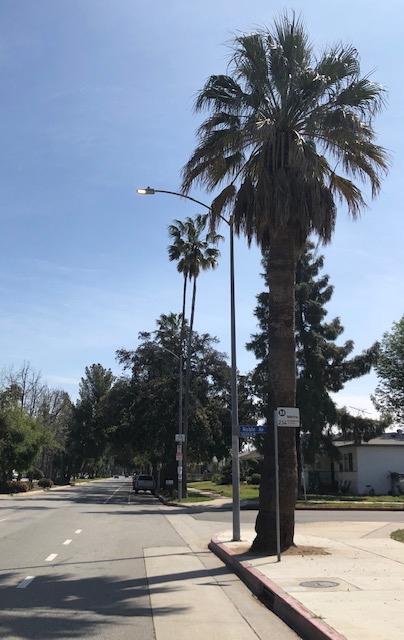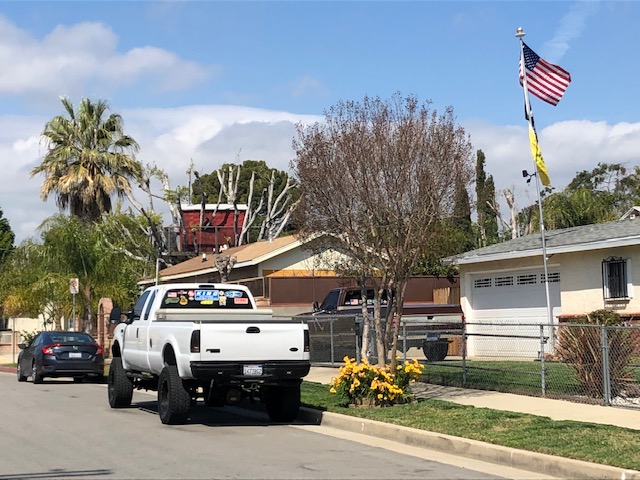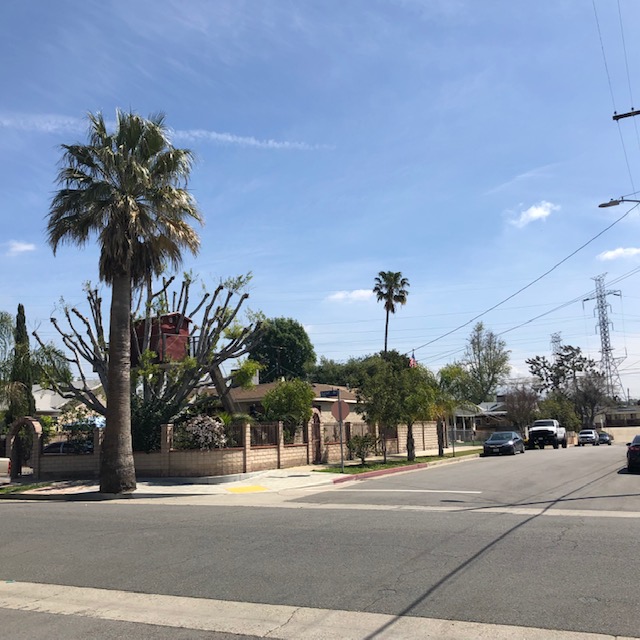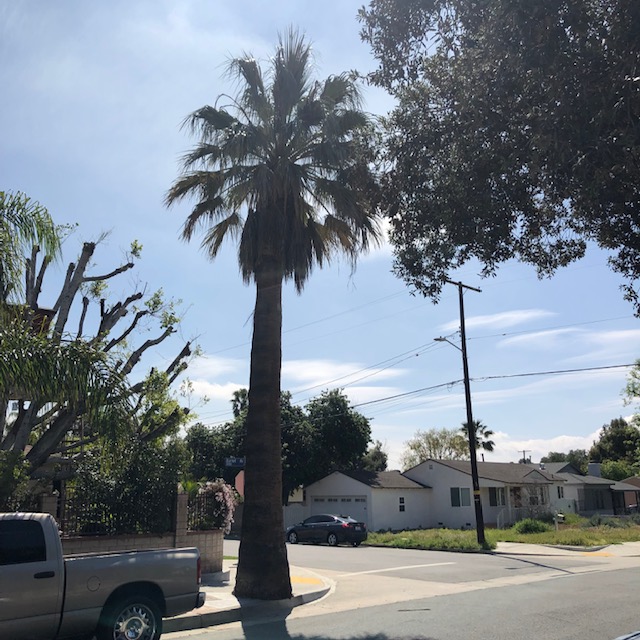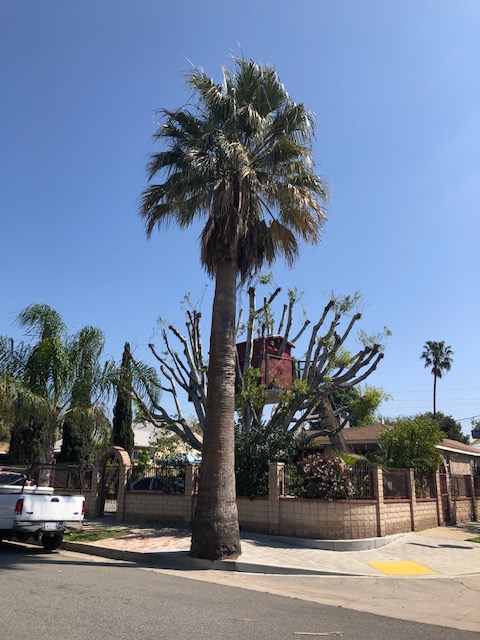Recall, Patient Reader: the very first palm trees in Los Angeles were those Canary Island date palms (below), planted at San Fernando Mission. This once-famous pair were planted, probably by Fr. Lasuen and Fr. Dumetz themselves, at a solemn mass at the 1797 dedication of the cemetery. These were the palms to be used on Palm Sunday, the emblems of triumph, martyrdom, and resurection, Phoenix canarensis. These palms, which were admired by travelers and painted and photographed as beloved relics, even after the Mission had crumbled, somehow disappeared from history without a trace.
But there were other, equally famous palms at San Fernando: that towering row of California Fan Palms that were planted out in the olive groves, just south of the Convento, probably sometime in the mid-1820’s. Since the first Spanish contact with the Agua Caliente band, whose canyons at Palm Springs engendered the palms, seem to have been in 1822, it need not have been long after that a few of those palms ended up at San Fernando.

…tourists, note the car… 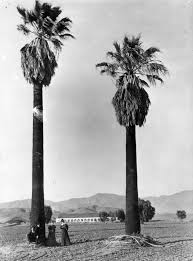
…tourists… 
Abbot Kinney and H.H. Jackson

[Intriguingly, an artist depicted Don Andres Pico in the 1850s, at home on the Convento corrida, with a view south over the olive grove. The artist notes both kinds of palms out there, the bushy fan palms on the left, and date palms, center and on the right, toward the ranch house.]
I hunted around Mission Hills to find old Washington filiferas, and tried to triangulate distance by the hills. There were some stately trunks the south side of Brand Blvd. that gave pause, especially this one:
Maybe it was put in when Brand Park and the P.E. station were developed, i.e., 1913? Plus it’s too close to the Convento; the historic trees were out in the groves, not close to the road.
Then I found…
The corner of Los Olivos Street and Burnett Avenue, I was amazed to spot the following battered but hardy specimen, which seems to have lived a life of incident. Is it the right trunk size and shape to maybe be the small palm to the east? Suspiciously off plumb from the street grid, the base has been (recently!) encased in concrete. It was common just before WWI, in the Valley, for developers to build rail-adjacent tracts sold as small farm plots, with only dirt roads and no sidewalks (low taxes, rural feel). Could this palm have survived simply because it fell on a strip of “public” land at the back of an old farm lot, and a sleepy lane? One that was, in the ’50s, subdivided and graded, but never (until recently) put to sidewalk? Yes, theoretically; this sequence is typical of the Valley.

The land south of the Convento seems to have been an open wheat field until after the turn of the century. When the Red Cars came in along Sepulveda/Brand boulevards, about 1913, the P.E. laid out six streets just south of the Convento and the station, for a sub-division tract. This neighborhood is right on top of the olive grove, directly adjacent to the old mayordomo’s house (i.e., the Pico Adobe). There are still many olive trees in the vicinity. But only one big filifera.
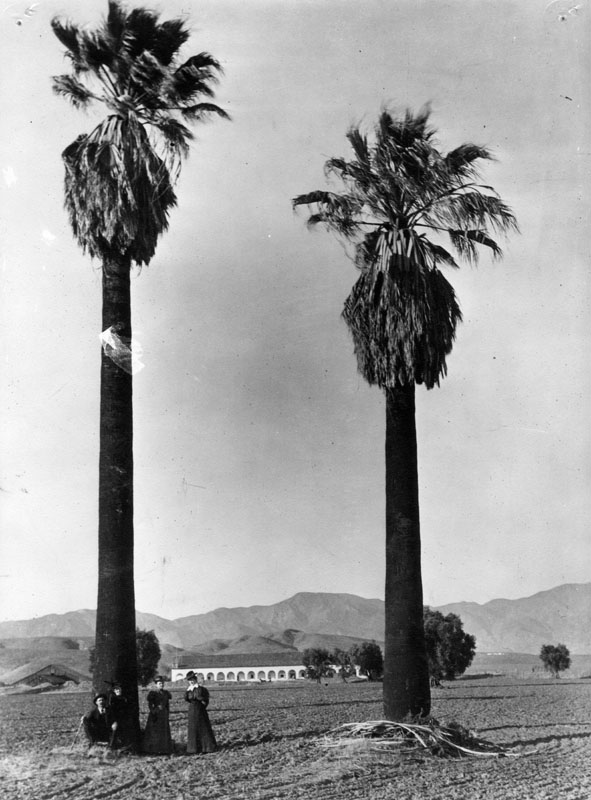

Its height roughly triangulates with the hills and the Convento, following the treeline and the electrical tower. I hazard the guess that this may be a last survivor of the historic San Fernando fan palms; or at least, it is on the spot and may be kin to one of those trees. Any reader suggestions on how to pin this down further?

